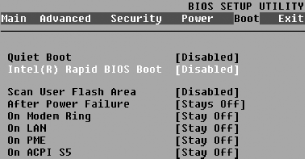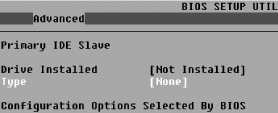Some of the stuff your computer does at boot time is of no use. Disable those features to boot faster.
The system BIOS does a lot of work in the P.O.S.T. phase before it gets your system to the point where it reads boot-up information from a disk drive to load an operating system. Some of the things that happen in P.O.S.T. have nothing to do with system performance other than impeding the process of getting to the operating system to run your applications. Intel, AMD, AMI, Award/Phoenix, and the PC manufacturers were aware of this waste of time, evaluated the events involved, and in many cases took steps to reduce the number of items and the amount of time the startup process takes. To that end there are a handful of changes you can make in order to boot up faster:
- Disable Extended Tests
Many systems offer the option of allowing an in-depth test of system memory and components (an extended test) or zipping through the system and getting to bootup as quickly as possible. With RAM as reliable and economical as it is (and having so much of it) and having Plug and Play operating systems like Windows and, to some extent, current versions of Linux, the Quick Test mode is more than adequate, and preferred for faster boot times. This parameter is shown in Figure 1-4 and specifies the depth, and thus the time involved, for testing system RAM and finding and checking the basic components of the systemâCOM and LPT ports and such.
- Configure Drive Detection
Most BIOSes provide the capability to automatically search for, identify, and configure different types of drives across four possible IDE and Serial ATA connections. This parameter setting usually shows up as AUTO in the IDE configuration choices. If you leave the parameter for all four possible IDE or Serial ATA devices set to AUTO, your BIOS will waste a lot of time searching for nonexistent devices. For faster boot times set the parameter to NONE as shown in Figure 1-5 for any unused interfaces and connections that have nothing attached to them.
- User BIOS Regions
This parameter, if it exists in your setup program, instructs the BIOS to search upper DOS memory (between 640 KB and 1 MB) for the existence of additional BIOS extension code. Such code exists on SCSI host adapters and on network cards that provide the ability to boot from a network server. Most PC users will never encounter a SCSI interface, nor systems configured to boot over a LAN through a network card, so there is no need to set this parameter to anything but No, Off, or Disabled and save yourself a couple more seconds at boot time.
Get PC Hacks now with the O’Reilly learning platform.
O’Reilly members experience books, live events, courses curated by job role, and more from O’Reilly and nearly 200 top publishers.



